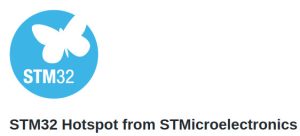Called STM32 Hotspot, it “contains non-productised code created by ST’s in-house engineers, originally written for purposes such as exhibition demonstrations and proof-of-concept models. Code examples like these would typically not be shared outside ST,” according to the company.
There are 27 repositories so far, with all projects complying with standard ST licensing rules – any developer can reuse the source code on an STM32 project “without worrying about copyright restrictions or copyleft regulations that would compromise commercial projects”, said ST. “We strongly encourage forking or cloning projects locally and customising them.”
No third-party submissions are accepted and, for security, “access through a trusted ST-owned GitHub organisation assures users of the software’s genuine provenance”, it added.
The company further clarified: By default, projects on STM32 Hotspot do not allow users to submit issues and pull requests. However, some authors “may choose to adopt a more active role and accept them”. All repositories go through a FOSS evaluation to ensure users can download, modify, and use the source code in commercial applications without exposing themselves to copyright infringement.
Two example projects are:
STM32WB-BLE-AI-MotionSense runs a machine learning application on wireless microcontroller.
It can distinguish between walking, running, or staying put. It then sends the result over Bluetooth to a sensor application on iOS or Android.
Predefined models run on one of the company’s development boards that includes an inertial sensor with a machine learning core.
B-U585I-IOT02A-ISM330DHCX-FreeFall-Detection is a fall detector using an accelerometer and gyroscope with a finite state machine and a machine learning core, all running on a particular development board. If the system detects free-fall, it turns the board’s green LED on.
STM32’s family has over 1,200 microcontroller variants, based on Arm Cortex-M and Cortex-A7 cores.

